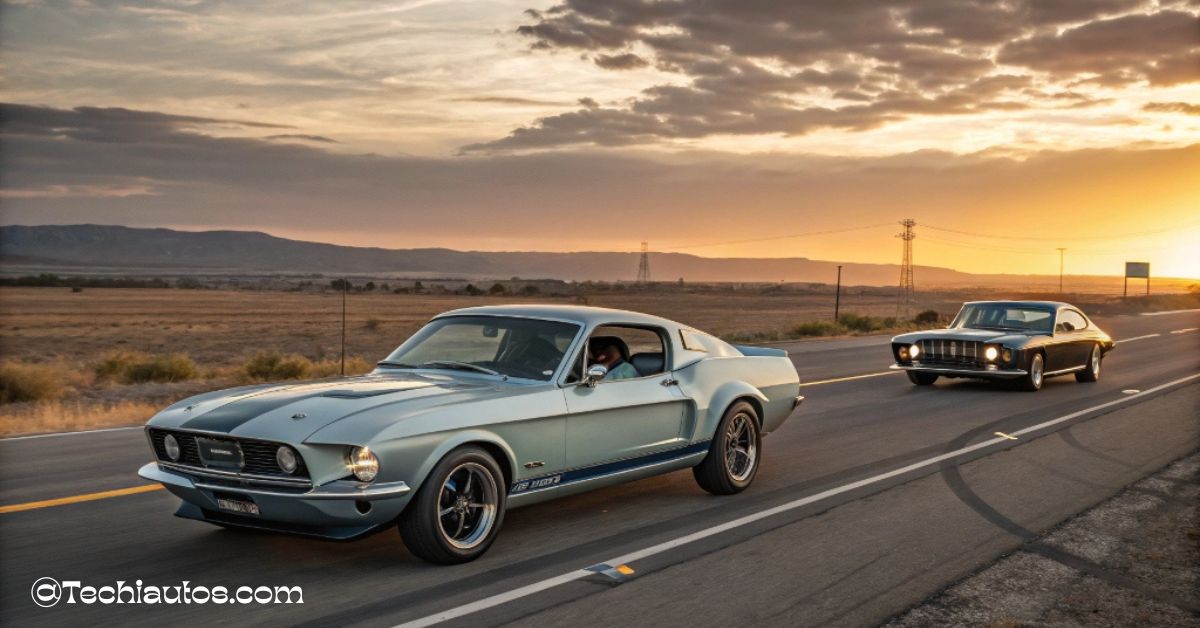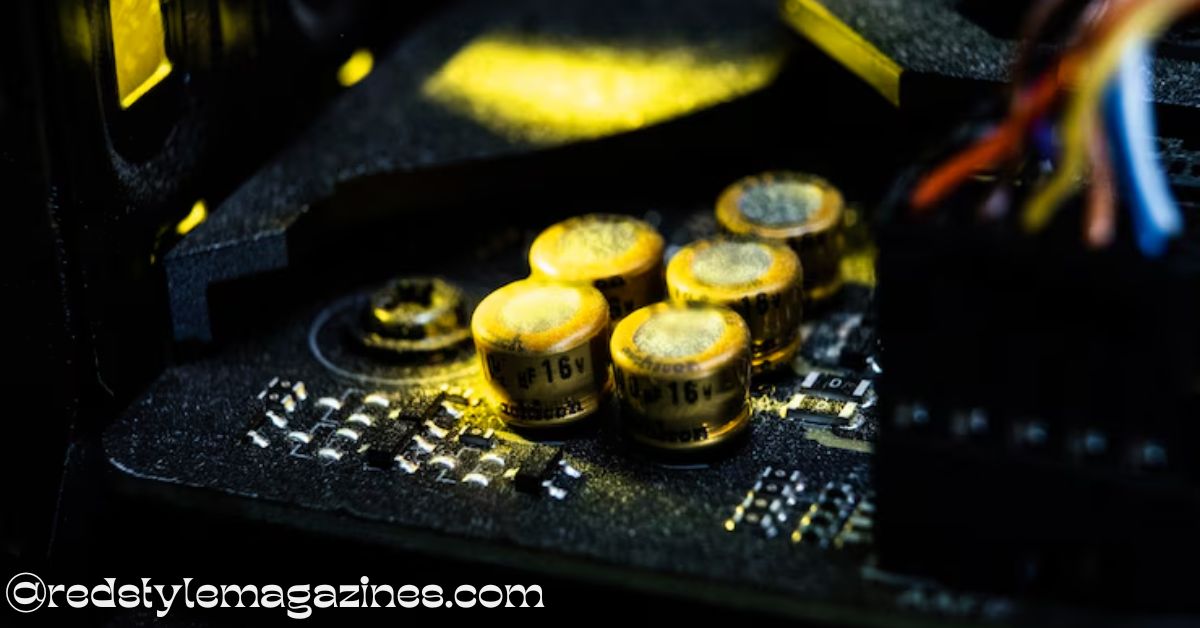Introduction: What Is a Ford Mustang Stablemate?
In the automotive world, the term “stablemate” refers to sibling models that share a design platform, engineering components, or target similar market segments under the same brand umbrella. When it comes to the iconic Ford Mustang, the concept of a “Ford Mustang stablemate” brings together a range of vehicles—past and present—that have either influenced or evolved alongside this legendary pony car.
From early companions like the Ford Falcon and Mercury Capri to modern electric successors like the Mustang Mach-E and the returning Ford Capri EV, Mustang’s stablemates have played critical roles in shaping its legacy. These vehicles not only share a familial design ethos but also target enthusiasts with performance, style, and innovation at their core.
This article explores the rich lineage of Mustang stablemates, comparing classic and modern examples while offering insights into design differences, performance parallels, and future prospects.
Classic Era Stablemates: 1960s–1970s
During the golden age of muscle cars, Ford introduced a lineup of vehicles that would become iconic stablemates to the Mustang. These models helped define the performance and design DNA that persists in Mustang’s legacy today.
Ford Falcon
The Ford Falcon, produced from 1960, was a compact car that laid the foundation for the original Mustang. By sharing its platform and many mechanical components with the first-generation Mustang, the Falcon had a direct influence on its sibling’s creation.
Ford positioned the Falcon as a practical and affordable option, making it the ideal companion to the Mustang when it launched in 1964. The Falcon’s contribution to the Mustang’s DNA included suspension systems, powertrains, and chassis elements.
According to sources such as Wikipedia, CBS Austin, and Classic Industries, the Falcon provided an economical base, while the Mustang focused on sportier appeal. The Falcon played a crucial role in Ford’s strategy to appeal to multiple customer types within the same product family.
European Ford Capri & Mercury Cougar
The Ford Capri, launched in 1968 in Europe, was designed as “Europe’s Mustang.” With its long hood, short deck styling, and performance options, the Capri carried a distinctly sporty identity that resonated with European markets.
The Mercury Capri, imported to the U.S. by Lincoln-Mercury from 1970 to 1977 and later revived from 1979 to 1986, served as a badge-engineered version of the Ford Mustang, utilizing the Fox platform. Meanwhile, the Mercury Cougar, introduced in 1967, served as a luxury-oriented counterpart to the Mustang, featuring more refined styling and interiors.
Sources such as HotCars, Hagerty, MyNBC15, and Wikipedia note that these models filled niche segments that the Mustang couldn’t fully serve on its own.
Pony Car Differentiation: The Capri vs. Mustang
Although closely related, the Capri and Mustang served different markets and adhered to distinct styling philosophies. Their contrasts highlight the flexibility of the Mustang platform and its global appeal.
Though they shared core components, the Ford Mustang and Mercury/Ford Capri were distinct in appearance and market focus. The Capri often featured a more European-inspired design, with hatchback configurations and a prominent four-headlight grille that set it apart visually.
Performance-wise, Capris came with several V8 variants such as the RS and ASC McLaren, mirroring Mustang’s GT and Cobra trims. The Mustang retained its American muscle car identity, while the Capri offered a more agile, compact European driving experience.
Motorsport played a key role in both models’ branding. The Capri achieved success in the SCCA Trans-Am racing series, enhancing its credibility as a serious performance machine.
Enthusiast forums, such as MacheForum, and articles from Classic Industries and CBSAustin emphasize these differences as defining characteristics of stablemates targeting overlapping yet distinct demographics.
Motorsport & Performance Stablemates
Some Mustang stablemates weren’t daily drivers but performance legends built for speed and precision. These include models that left their mark on racing circuits and in high-performance tuning circles.
Saleen Mustang: Tuned High-Performance Variant
Saleen Mustangs, beginning in 1984, offer a performance-focused take on the base Mustang platform. Founded by Steve Saleen, the company modified Fox-body Mustangs into powerful, limited-edition models featuring enhanced suspension, unique body kits, and supercharged engines, such as the S281E.
Though technically a derivative of the Mustang, Saleen models represent a separate identity with exclusive serial numbers and branding. This makes them stablemates in function but also standalone collector’s cars. Sources like HotRod.com and Classic Industries document the racing pedigree and aftermarket popularity of these vehicles.
SSP Mustang: Law Enforcement Pursuit Car
From 1982 to 1993, Ford produced the SSP (Special Service Package) Mustang for law enforcement. Based on the Fox-body platform, these stablemates included reinforced frames, upgraded cooling systems, and police-specific equipment.
The SSP Mustang demonstrated that the platform could be adapted for use beyond civilian purposes, showcasing the Mustang’s versatility. Detailed coverage on Wikipedia and enthusiast discussions on MacheForum highlight their historical value and collectibility.
Modern-Era Stablemates & EV Pivot
As the automotive world moves toward electrification, the Mustang’s family has grown to include modern electric vehicles. These new stablemates carry Mustang DNA into the future of mobility.
Mustang Mach-E: Electric SUV
Introduced in 2020, the Mustang Mach-E represents a bold expansion of the Mustang nameplate into the electric SUV segment. While some enthusiasts criticized the use of the Mustang badge, Ford positioned the Mach-E as a modern stablemate sharing the brand’s performance ethos.
With AWD options, performance GT trims, and tech-rich interiors, the Mach-E aligns with Mustang’s spirit, even if it diverges in form. Reviews on Mustang7G and MyNBC15 reflect the split opinions on its place in the Mustang lineage.
The Return of the Capri: EV Stablemate?
In 2024, Ford announced the return of the Capri as an electric vehicle, further expanding the Mustang stablemate portfolio. This Europe-focused EV, built on Volkswagen’s MEB platform, offers up to 335 hp and an estimated range of 368 to 390 miles.
Expected to launch first in Europe, the new Capri revives an iconic name while embracing the shift toward electrification. According to sources from CBS Austin and MyNBC15, the Capri EV aims to complement the Mach-E by targeting hatchback and crossover enthusiasts.
Enthusiast Community: Finding Your Mustang Stablemate
Car enthusiasts often enjoy pairing their Mustang with classic or modern stablemates. These combinations create a unique garage experience that showcases Ford’s diverse performance capabilities.
Within Mustang enthusiast circles, many owners complement their collections with stablemates such as Falcons, Capris, Mach-Es, or even SSP Mustangs. Online communities like MacheClub often host discussions comparing performance, design legacy, and collectibility of these related models.
Owners appreciate the shared lineage and diverse expressions of the Mustang DNA. Whether it’s a track-ready Saleen, a daily-driver Mach-E, or a vintage Falcon, each stablemate serves a distinct purpose.
These discussions also explore whether vehicles like the Mach-E or Capri EV truly fit within the Mustang stable, underscoring the passion and debate that these models inspire.
What Makes the Ideal Mustang Stablemate?
Not all siblings are created equal—an ideal Mustang stablemate shares its essence while offering something new. It’s a combination of shared heritage and distinct personality.
A true Mustang stablemate must strike a balance between shared DNA and individual identity. Common traits include platform sharing, design cues, or a mutual emphasis on performance and driving enjoyment.
For instance, the Falcon offered foundational mechanics, while the Capri brought European flair. The Mach-E and electric Capri deliver electrified options for new-generation drivers. Whether coupe, sedan, SUV, or EV, the ideal stablemate offers something unique while complementing the Mustang’s core appeal.
Innovation, performance, and historical relevance all contribute to what defines a meaningful stablemate in the evolving Ford Mustang family.
Future Outlook & Predictions
The Mustang stable is evolving, with electrified and hybrid models on the horizon. These future entries could redefine what it means to be a true Mustang stablemate.
Looking ahead, Ford may expand the Mustang lineup with new hybrids, performance electric coupes, or even global sedans that align with the Mustang’s reputation. These future stablemates could blend legacy styling with cutting-edge electric performance.
As the automotive market shifts toward sustainability, we expect Ford to lean on the strength of the Mustang name while diversifying its product offerings. Future stablemates may also include global-specific models tailored to meet regional preferences.
The Mustang brand is no longer just about a single model—it is becoming a sub-brand in itself, much like Jeep and Bronco have developed their own product ecosystems. Expect future stablemates to deepen this strategy.
Conclusion
Mustang stablemates have shaped the car’s identity across generations. From muscle classics to electric pioneers, they remain vital to the brand’s legacy.
The concept of a “Ford Mustang stablemate” spans decades of innovation, adaptation, and market strategy. From the humble Falcon and spirited Capri to today’s electrified Mach-E and upcoming Capri EV, stablemates have enriched the Mustang story.
These vehicles share components, philosophies, and in many cases, the hearts of enthusiasts who appreciate Ford’s commitment to performance and design. As Ford moves toward an electric future, stablemates will continue to evolve but remain central to the Mustang’s expanding legacy.
Whether you’re a fan of muscle, motorsport, or modern EVs, there’s a Ford Mustang stablemate out there to suit your style.
FAQs
1. Why is the Ford Falcon considered a Mustang stablemate?
The Falcon served as the base platform for the original Mustang, sharing chassis and mechanical components, making it an early and essential stablemate.
2. Is the Mustang Mach-E truly a Mustang stablemate?
Yes, while it differs in form, the Mach-E carries the Mustang’s performance DNA and is officially marketed as part of the Mustang lineup.
3. What sets the Mercury Capri apart from the Mustang?
The Capri featured European styling and a hatchback design, offering a sportier, more compact alternative to the Mustang while using similar platforms.
4. Are Saleen Mustangs factory models or aftermarket?
Saleen Mustangs originated as modified factory models but evolved into officially serialized, performance-enhanced versions that are considered part of the Mustang family.
5. Will the new Capri EV be sold in the U.S.?
As of now, the new Capri EV is confirmed for the European market, but Ford may expand availability depending on global demand.




